The Bassin d'Arcachon covers 155 square kilometers along the French Atlantic coast and offers numerous subjects for photography. The Dune du Pilat rises 110 meters above sea level and forms the tallest sand dune in Europe. Oyster farming villages such as Gujan-Mestras, L'Herbe, and Le Canon display wooden huts on stilts distributed along the shores. The Cap Ferret peninsula separates the basin from the Atlantic and presents long sandy beaches on both sides. The Cap Ferret lighthouse from 1947 reaches a height of 53 meters. The Île aux Oiseaux sits in the center of the basin and hosts two traditional stilt cabins, the Cabanes Tchanquées, which are surrounded by water at high tide. The town of Arcachon displays 19th-century villas in the Ville d'Hiver, a district with over 300 buildings in Belle Époque style. The Domaine de Certes et Graveyron nature reserve includes former salt marshes and fish ponds now inhabited by herons, spoonbills, and other water birds. The beaches of Pereire and Pyla-sur-Mer provide direct views of the basin and nearby pine forests.

La Teste-de-Buch, France
The Dune du Pilat is a moving sand dune located on the Atlantic coast, stretching over 2.7 kilometers and reaching approximately 110 meters in height. This sand formation offers expansive views from its summit across the Atlantic Ocean to the west and the pine forest of the Landes to the east. Access to the top is via a wooden staircase or directly through the sand, leading to a vantage point overlooking the Arcachon Bay and the Banc d'Arguin. The dune continuously changes shape due to wind and tides, moving several meters inland each year.
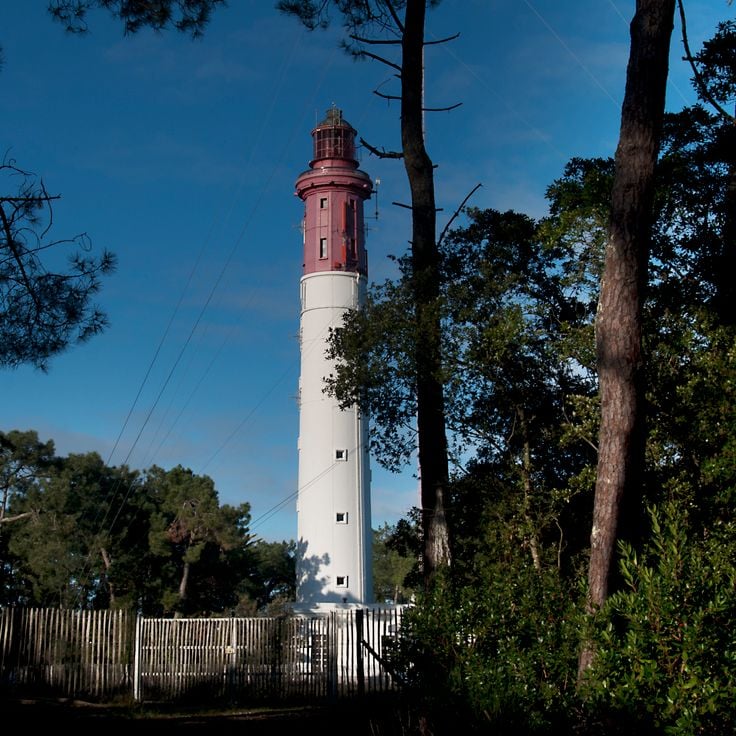
Lège-Cap-Ferret, France
The Cap Ferret lighthouse was built in 1840 and has guided maritime traffic at the entrance to the Arcachon Basin for over 180 years. The red and white iron structure rises 52 meters high. Visitors can climb 258 steps to reach the observation platform, which provides panoramic views over the Atlantic Ocean, the Dune of Pilat, the Arcachon Basin, and the surrounding pine forests. The structure stands on a sand dune at the tip of the Cap Ferret peninsula.
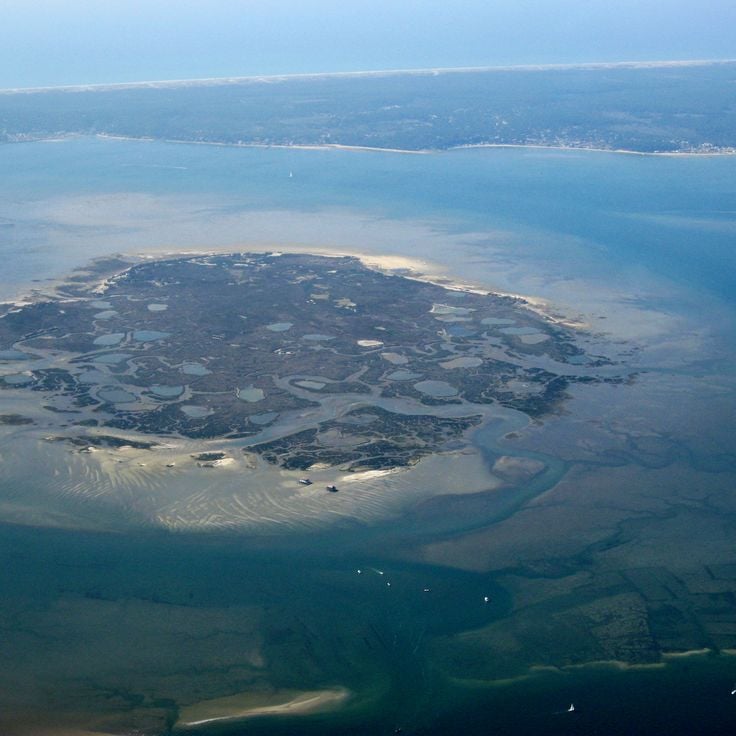
Bassin d'Arcachon, France
The Île aux Oiseaux covers 235 hectares in the Bassin d'Arcachon and houses two fishermen's huts from the 19th century built on stilts. These two structures, known as Cabanes Tchanquées, stand in shallow water and have become a symbol of the region. The island remains uninhabited and gets partially flooded during high tide. Many bird species nest here during migration periods. Boat tours from the mainland allow visitors to view the huts up close and explore the natural surroundings.
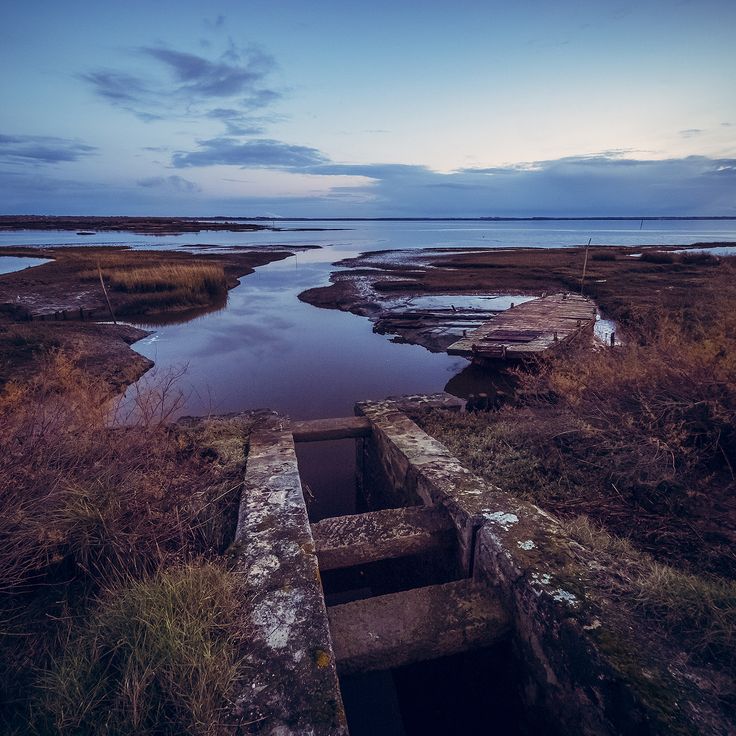
Audenge, France
The Domaine de Certes et Graveyron covers 530 hectares and combines salt marshes, former fish ponds, and waterfowl observation points. This protected natural area along the Bassin d'Arcachon offers numerous photography opportunities through its network of channels, dikes, and changing water levels. The former oyster basins attract herons, storks, and wading birds. Several marked trails traverse different habitats, allowing for captures of bird species and landscapes at various times of day.
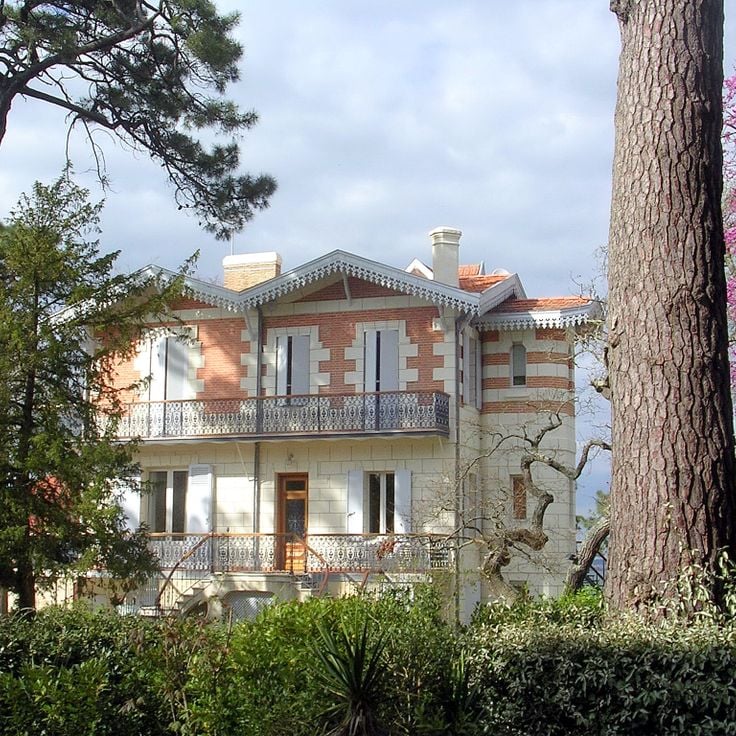
Arcachon, France
The Ville d'Hiver is a 19th-century residential district located on the forested hills of Arcachon. This neighborhood was developed from 1862 as a health resort for wealthy visitors and features an exceptional collection of historic villas. The architecture combines Mediterranean influences with elements from various colonial styles and the Belle Époque period. The buildings stand among maritime pine trees that provide a mild microclimate. Numerous walking paths wind through the green neighborhood and offer views over the Arcachon Basin.
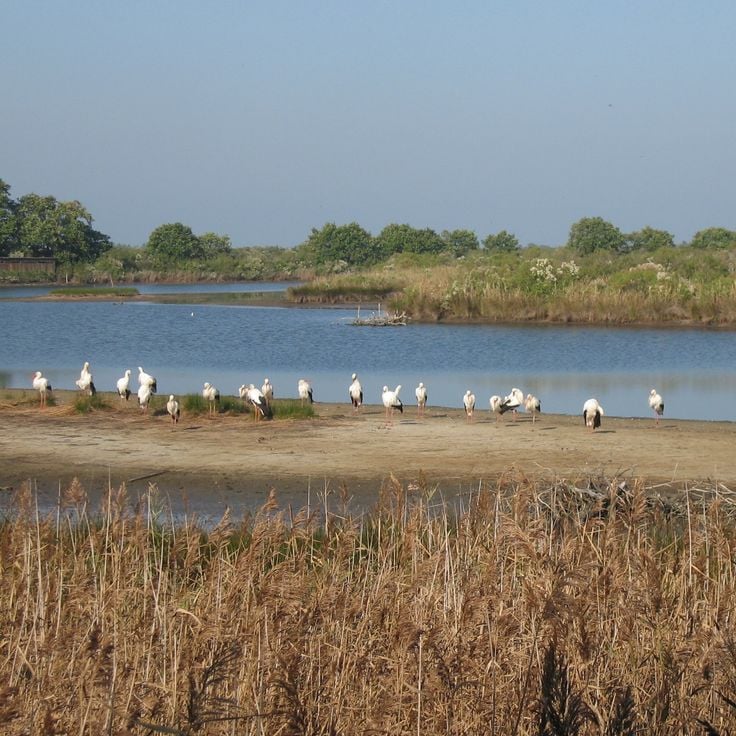
Le Teich, France
The Île aux Oiseaux bird sanctuary within the Le Teich nature reserve provides several observation posts for discovering migratory and local species of the Bassin d'Arcachon. Marked trails lead through various habitats between salt marshes and wetlands. Information panels explain the site's ecology and bird species present according to the season. Guided tours allow observation of waders, herons and other waterbirds in their natural environment.
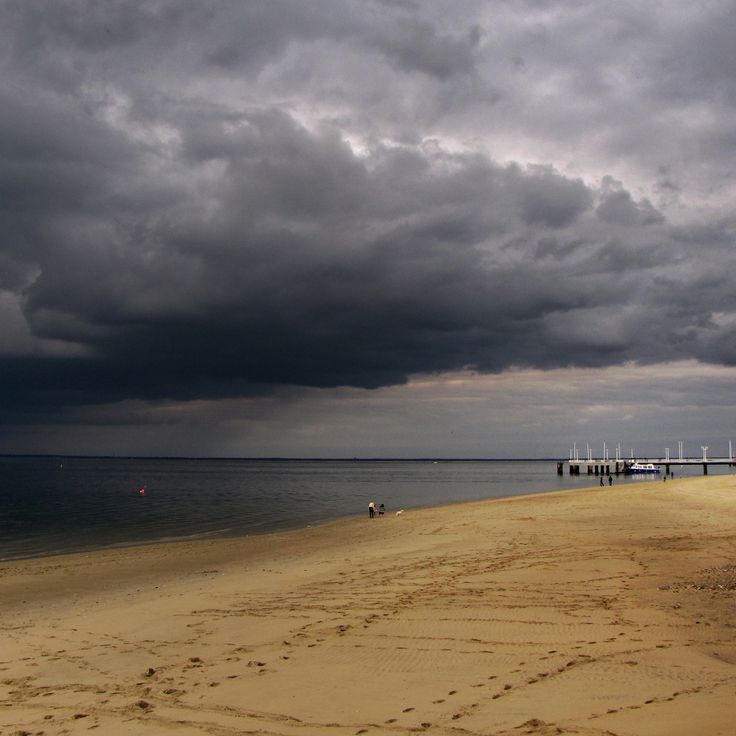
Arcachon, France
The Jetée Thiers extends 150 meters over the waters of the Arcachon Basin. Built in the 19th century, this pier now serves as an observation point for visitors and photographers. From here, direct views open onto the Île aux Oiseaux with its characteristic wooden cabins on stilts, known as Cabanes Tchanquées. The jetty connects the town to the water and provides opportunities to photograph the surrounding landscape, fishing boats, and the changing tides of the basin.

Île aux Oiseaux, France
These two wooden cabins on stilts were built in 1913 on Île aux Oiseaux and originally served for oyster farming and basin surveillance. The Cabanes Tchanquées now stand as landmarks of the Bassin d'Arcachon and can only be reached by boat at high tide. These typical constructions embody the maritime tradition of the region and offer a characteristic subject in the middle of the constantly changing water landscape.
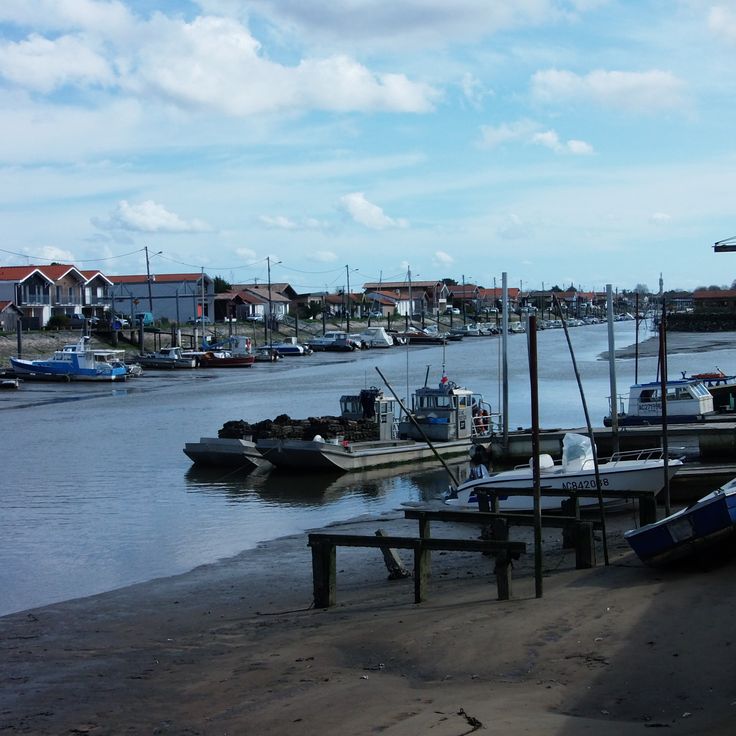
La Teste-de-Buch, France
The port of La Teste houses fishing boats in different colours moored along the quays. Fishermen sell their fresh catch directly at market stalls by the harbour. The boats return every morning with fish and seafood from the Arcachon Basin. Visitors can observe the fishermen at work and purchase local seafood products.
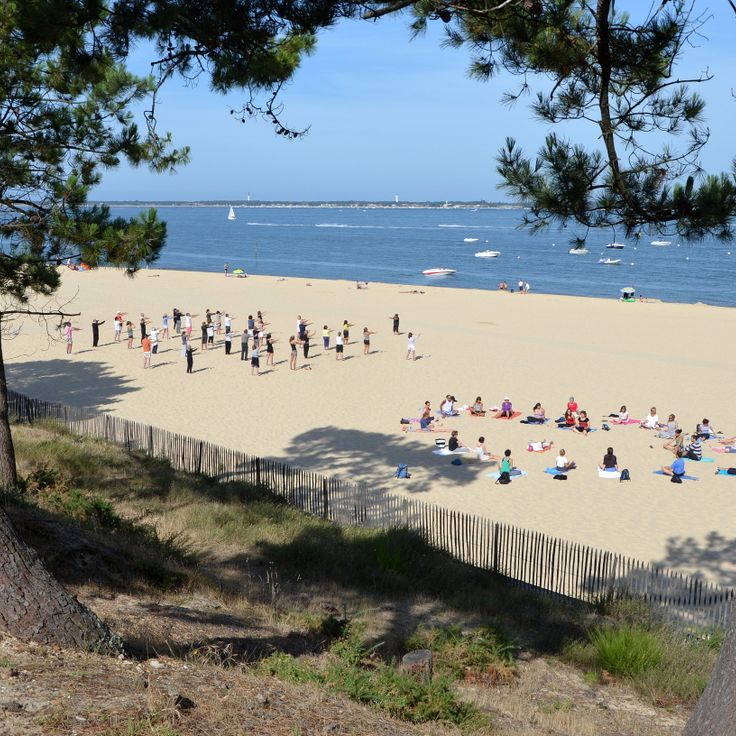
Arcachon, France
Plage Pereire features a promenade that extends three kilometers along the Atlantic coast. Historic 19th-century villas line the walkway, showcasing Belle Époque architecture characteristic of the region. The fine sandy beach provides direct access to the ocean and accommodates various beach activities. The promenade connects several beach sections and offers walks with views over the Bassin d'Arcachon.
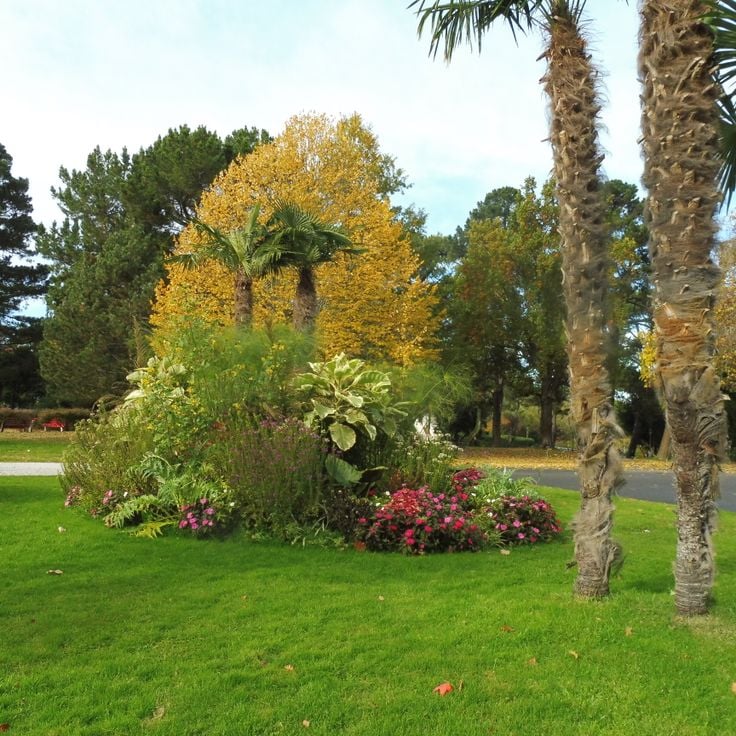
Arcachon, France
Parc Mauresque sits on elevated ground overlooking the Bassin d'Arcachon. This public garden was created in the nineteenth century and combines oriental architecture with Mediterranean vegetation. The central pavilion features Moorish domes and decorated arches. Pathways wind between palm trees, pines and exotic plant species. From the terraces, visitors enjoy wide views across the bay and the town of Arcachon.
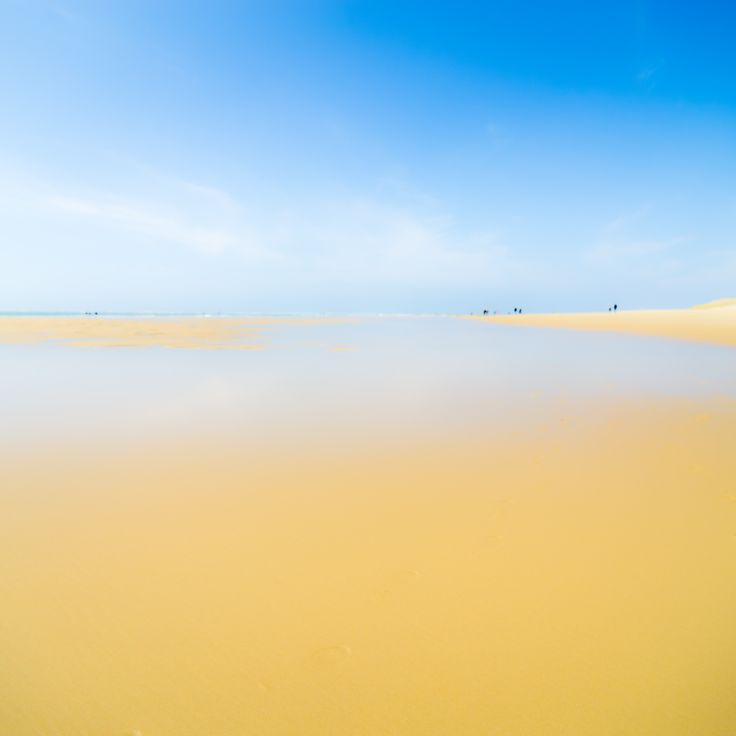
Lège-Cap-Ferret, France
Plage de la Pointe aux Chevaux sits at the tip of the Cap Ferret peninsula, offering direct views of the Atlantic Ocean. The beach stretches along a spit of land separating the Arcachon Basin from the open sea. From this location, the Dune du Pilat and the Atlantic coastline are visible. The area combines sandy beaches with pine forests behind them, characteristic of the Gironde landscape. The beach can be reached through walking paths that cross the forested sections of the peninsula.
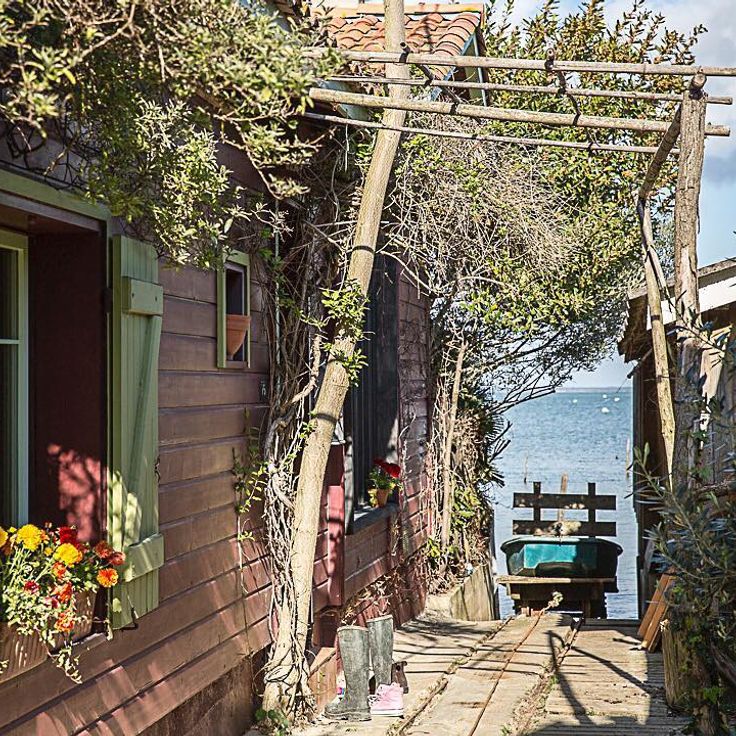
Lège-Cap-Ferret, France
Village Le Canon is an active oyster farming center on the Bassin d'Arcachon. Colorful fishermen's huts line the narrow channels that reveal oyster beds at low tide. These traditional wooden structures serve as workshops and sales points for local producers. The site maintains its authentic working character and offers photographers a typical scene of oyster culture with the geometric patterns of the farming beds and the bright colors of the cabins.
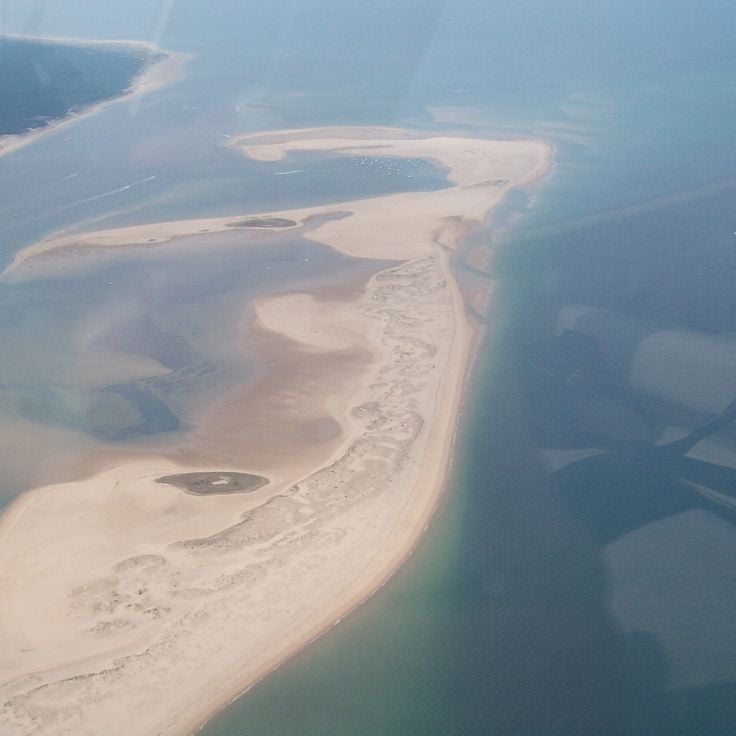
Arcachon Bay Area, France
The Banc d'Arguin is a mobile sandbank in the Atlantic Ocean, extending south of the Dune of Pilat. This sand formation constantly changes shape and position due to currents and tides. The area serves as a nature reserve for migratory birds, particularly terns and oystercatchers. At low tide, the sandbank covers approximately four square kilometers. Access is only by boat from the docks in Arcachon or Pyla-sur-Mer. The sandbank offers photographers long stretches of sand, shallow tidal pools, and dune vegetation as subjects.
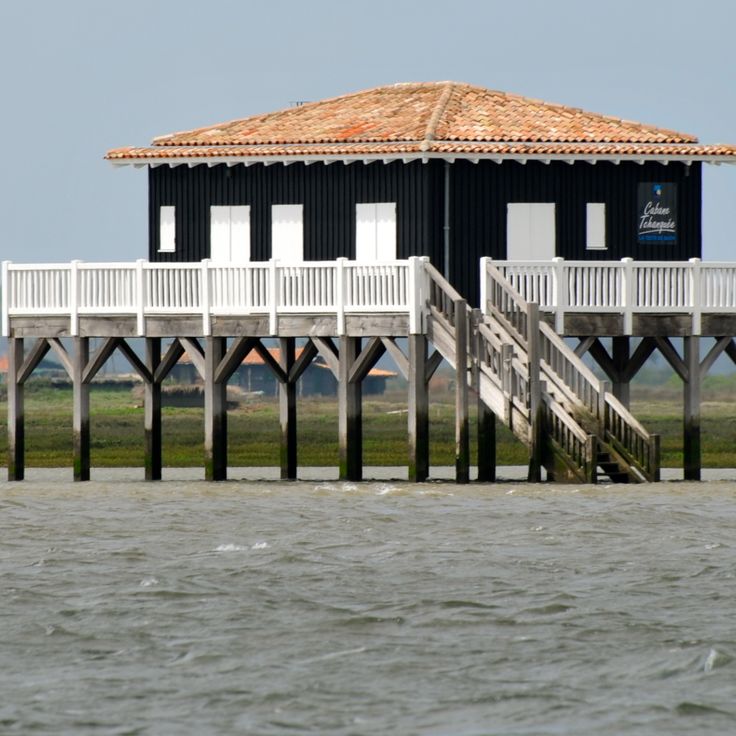
Île aux Oiseaux, France
This stilt house bears the number 53 and stands in the shallow waters of Île aux Oiseaux in the Bassin d'Arcachon. The wooden structure rises on tall stilts that are surrounded by water at high tide. The red roof and weathered facades reflect decades of presence in this marine environment. The cabin is accessible only by boat and serves as a photography subject for visitors documenting the traditional architecture of the basin.

Pyla-sur-Mer, France
The beach at Pyla-sur-Mer stretches for several kilometers at the base of the Dune du Pilat, Europe's tallest sand dune. This expanse of fine sand provides direct access to the Atlantic Ocean and offers views of sunsets over the water during summer months. The position between dune and ocean creates a distinctive coastal landscape on the Arcachon Basin.
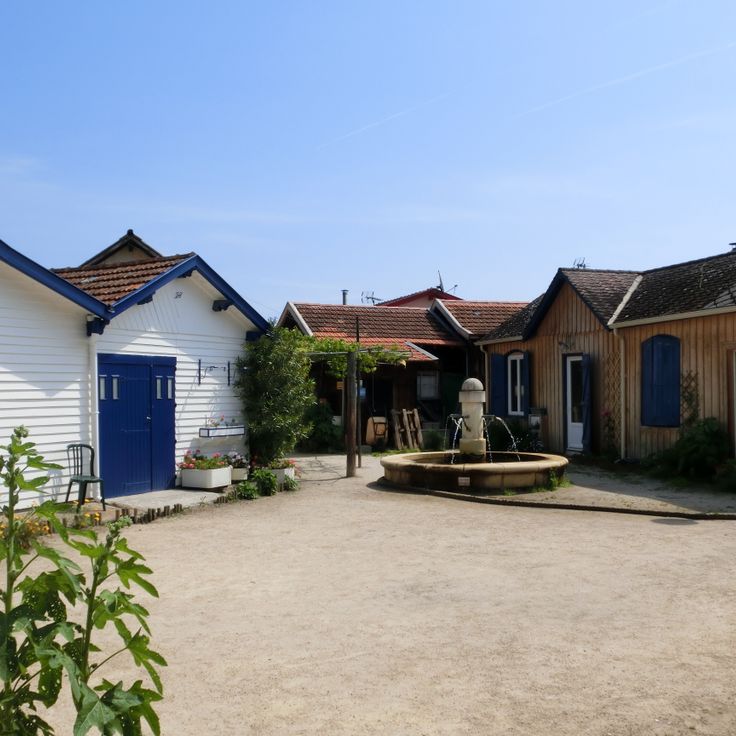
Lège-Cap-Ferret, France
The Quartier Maritime de L'Herbe is a small fishing district on the Cap Ferret peninsula. Wooden houses stand on low stilts along narrow paths leading to the harbor. Numerous oyster huts line the waterfront, where fishermen sell their catch directly. The architecture preserves the traditional character of oyster farming in the Arcachon Basin. Visitors can walk through the narrow lanes between colorful huts and enjoy views across the bay.
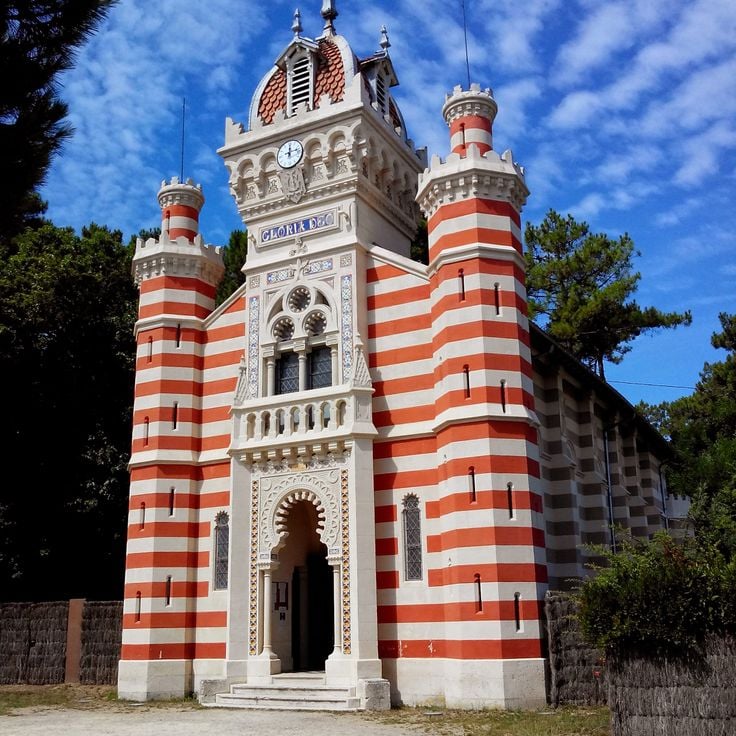
Lège-Cap-Ferret, France
The Chapelle Mauresque was built in 1885 and combines religious function with Moorish architecture. The building features decorated ceramic tiles, geometric patterns, and oriental design elements. This chapel is located on private residential grounds in Lège-Cap-Ferret and belongs to a historic villa. The architecture reflects North African building traditions that became popular along the French Atlantic coast during the late 19th century.
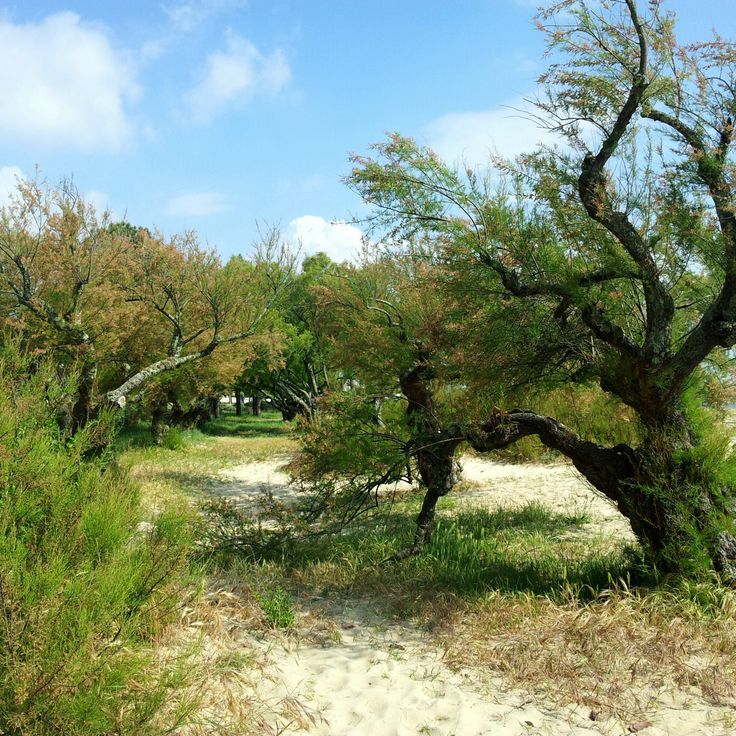
Andernos-les-Bains, France
Bétey Beach stretches along the eastern shore of Arcachon Bay in Andernos-les-Bains. This sandy beach is bordered by maritime pine trees that provide natural shade throughout the day. The water deepens gradually, making it suitable for families with young children. The area offers sufficient space for activities such as land sailing, kitesurfing, and stand-up paddling. Access to the beach is available through several pathways that cross the dune vegetation.
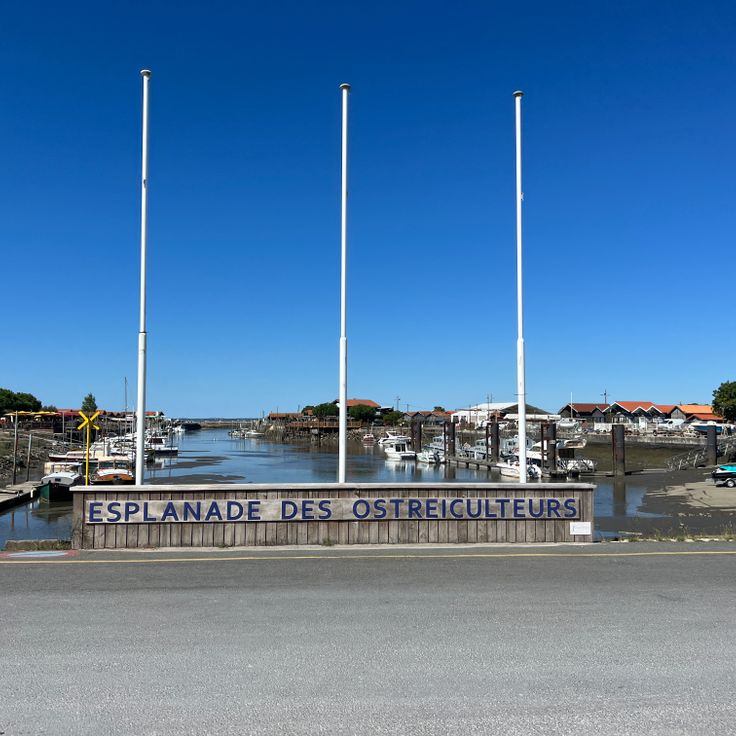
Gujan-Mestras, France
The port network of Gujan-Mestras comprises seven harbours equipped with wooden pontoons and facilities for oyster farming. Throughout the day, the boats of oyster farmers navigate the waters, transporting their produce between the various harbour basins. These working ports offer numerous opportunities for photographing the traditional oyster industry of the Arcachon Basin.
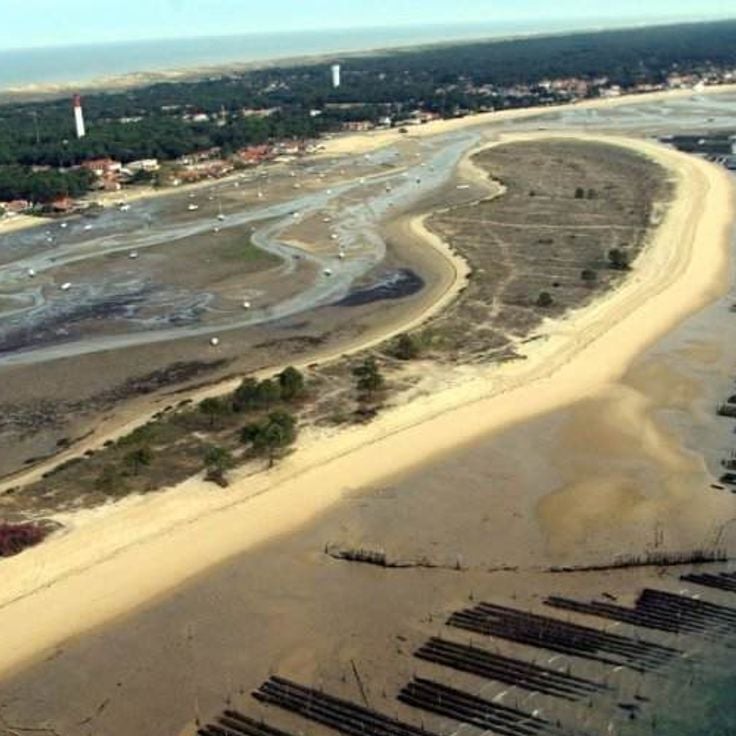
Cap Ferret, France
The Plage du Mimbeau extends as a narrow strip of sand into the Arcachon Basin, forming a natural peninsula. This beach formation provides photographers with a favorable position for capturing images during evening hours when the sun sets over the water. The exposed location offers unobstructed views across the basin and toward the opposite shoreline, while the shallow water in the foreground creates reflections.
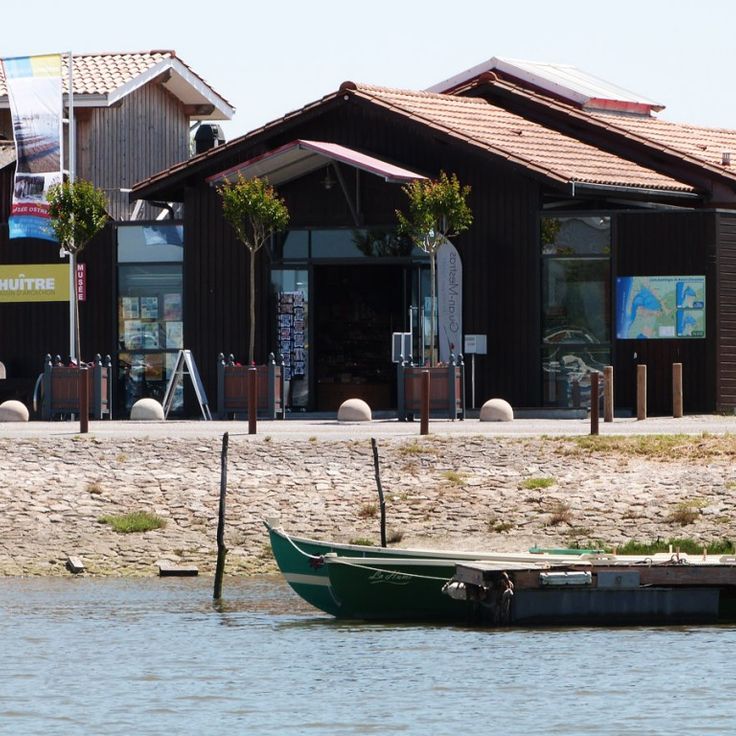
Gujan-Mestras, France
The Maison de l'Huître presents the history of oyster farming in the Arcachon Basin. The museum displays historical tools, work equipment and photographs documenting the evolution of production methods since the 19th century. Visitors learn through detailed explanations how oyster cultivation techniques have changed over the decades and the role this activity plays in the local economy.
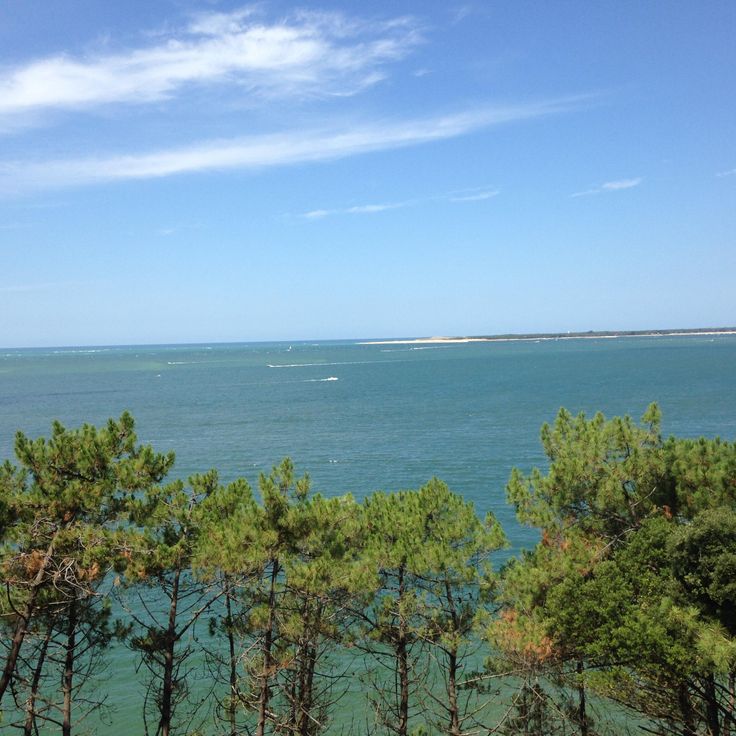
Pyla-sur-Mer, France
The viewpoint at Hôtel La Corniche is positioned on the coast of Pyla-sur-Mer and provides direct views of the Dune du Pilat, Europe's tallest sand dune, and the Bassin d'Arcachon. This terrace offers panoramic vistas across the water and surrounding pine forests. The location is particularly suitable for photography during sunset, when light illuminates the dune and bay.
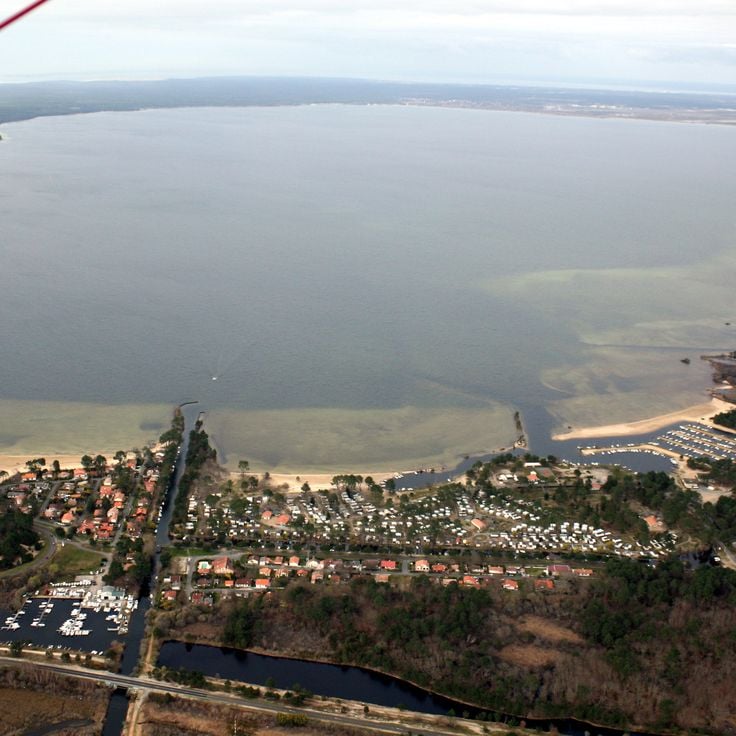
Cazaux, France
The Étangs de Cazaux et Sanguinet form a connected water system in the southern part of the Gironde department. These lakes cover approximately 56 square kilometers and rank among the largest natural freshwater lakes in France. The shores are lined with extensive pine forests from the Landes forest, which reflect clearly on the water surface during calm weather conditions. The two lakes are connected by a narrow channel and offer numerous access points for photographers along the forested shorelines.
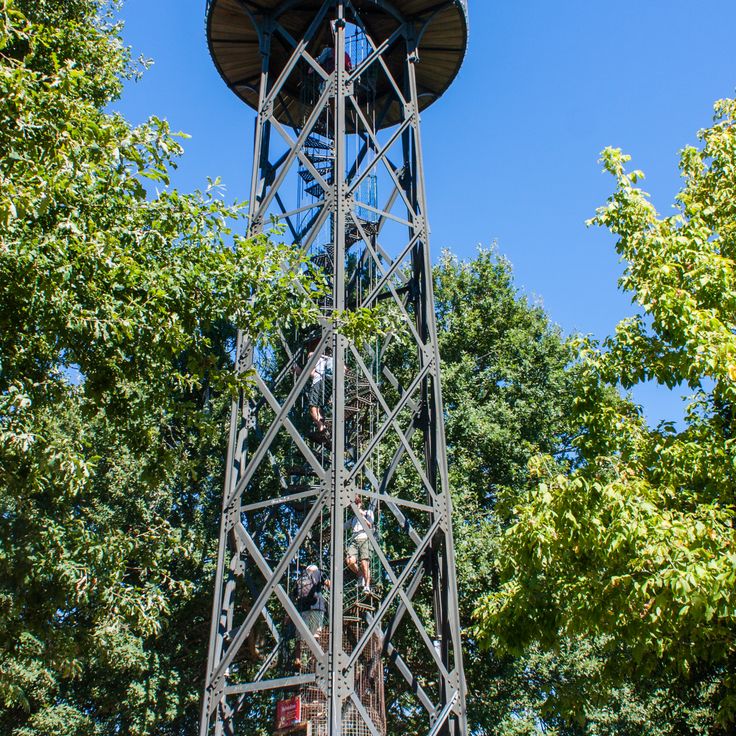
Arcachon, France
The Observatoire Sainte-Cécile is a 25-meter metal tower designed by Gustave Eiffel. This structure stands in the heart of Arcachon and serves as an observation point over the entire Arcachon Bay. From the upper platform, visitors can observe the oyster beds, the Île aux Oiseaux, and the surrounding pine forests. The tower was built in the late 19th century and displays the characteristic steel architecture of the Eiffel era. The observation platform is accessible via a spiral staircase and offers photographers interesting perspectives on the bay and the town.
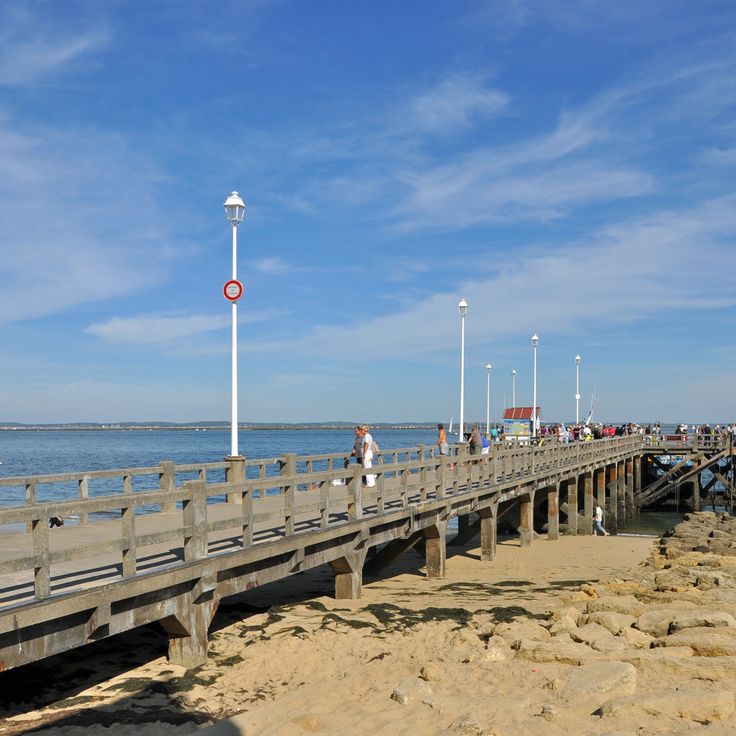
Arcachon, France
The Jetée d'Eyrac is a 190-meter wooden pier extending over the waters of the Arcachon Basin. Fishermen regularly use this pier for angling, while visitors come here to walk along the wooden planks and enjoy views across the basin. The pier connects the shore to the open water and provides a direct perspective on the maritime environment of Arcachon.
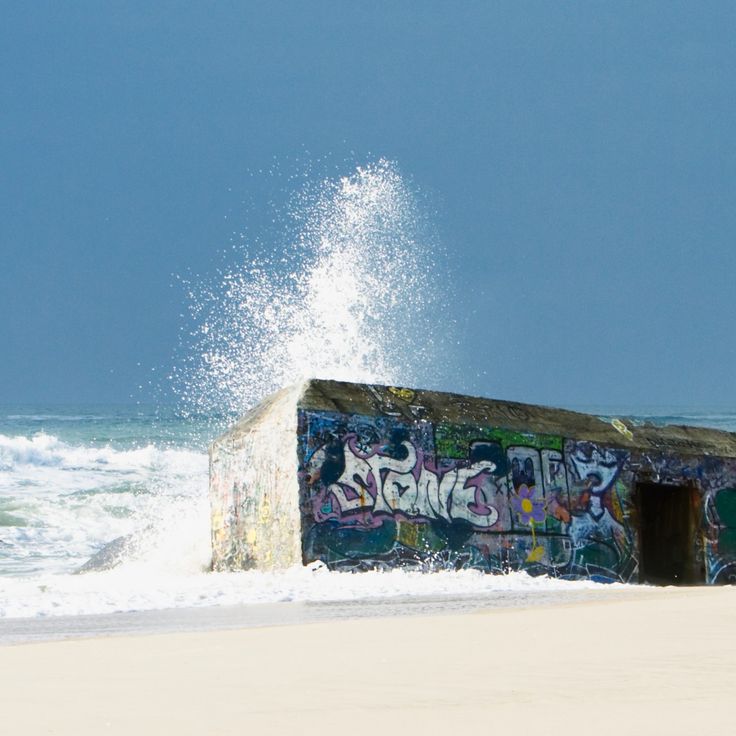
Cap Ferret, France
The Abri Bunker d'Arthur is a former Second World War military installation now serving as a contemporary art gallery. The concrete structure has been converted into an exhibition space that hosts rotating art shows. The bunker's architecture provides an interesting contrast to the modern artworks displayed within its walls. This venue combines the history of coastal defense with the current art scene, offering visitors an opportunity to explore both aspects in a single location.
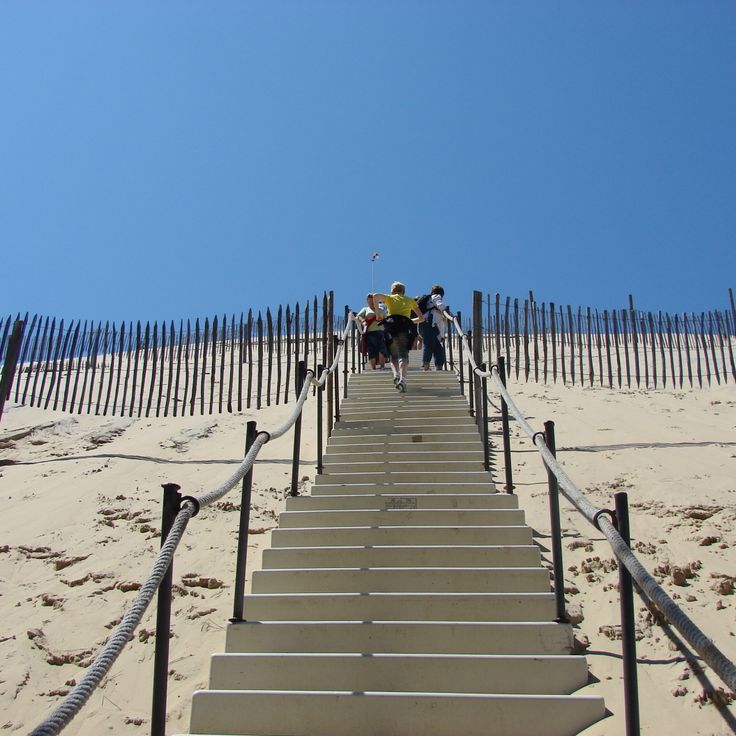
La Teste-de-Buch, France
The Escaliers de la corniche are stone steps that descend from the cliff to the beach. These stairs provide access to the shoreline while offering views across the Atlantic Ocean. From here, one can see the Dune du Pilat, the largest sand dune in Europe, rising south of the Arcachon Basin. The steps run along the rock face and connect the upper corniche to the beach area.
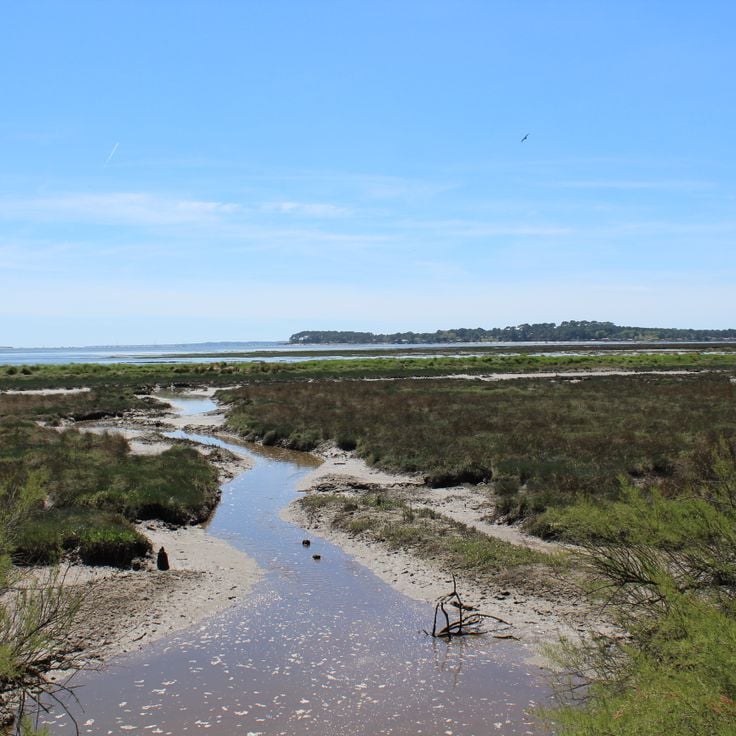
Arès, France
The Réserve naturelle nationale des prés salés d'Arès et de Lège-Cap Ferret covers 317 hectares along the Arcachon Basin. This protected area preserves typical salt marshes and wetlands that flood during high tides. Several marked trails cross the reserve and allow observation of migratory birds and resident species such as herons, ducks and waders. Observation points provide open views of the channels and mudflats where numerous bird species feed.
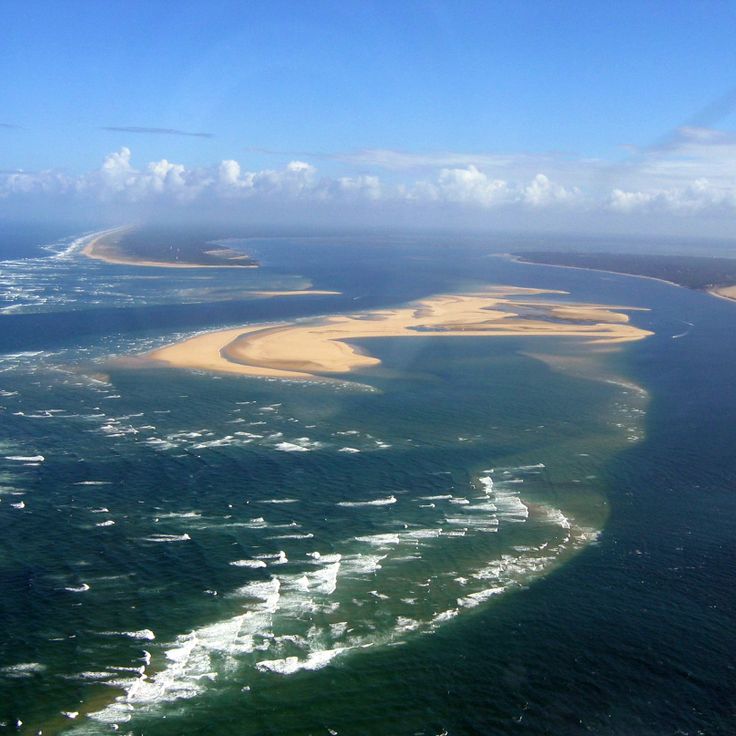
Le Teich, France
The Leyre Delta forms a 330-hectare nature reserve where the river flows into the Arcachon Basin. This wetland comprises water channels, salt marshes and freshwater lakes shaped by tidal movements. The reserve serves as a habitat for numerous aquatic bird species including herons, stilts and spoonbills. Several walking trails allow observation of the fauna and flora across different seasons.
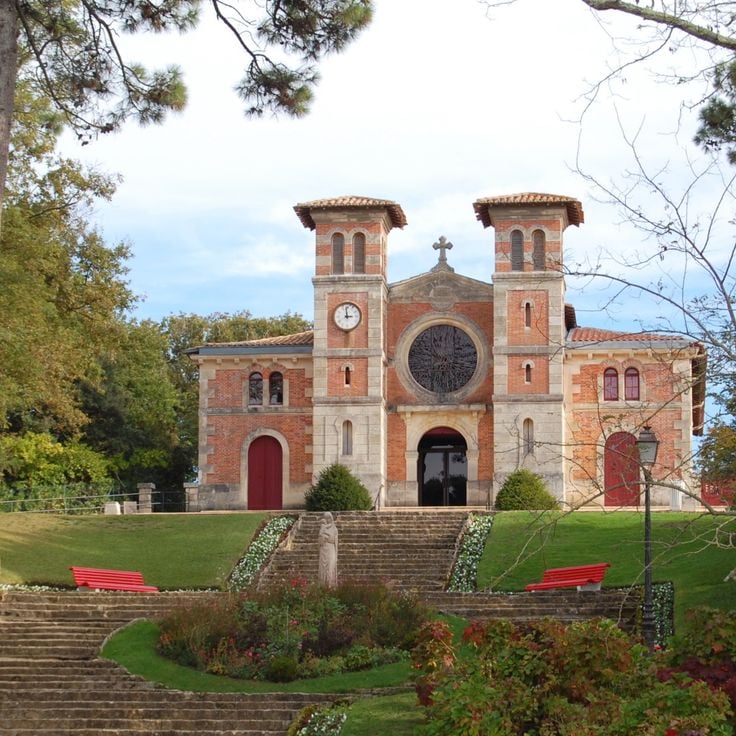
Arcachon, France
Le Moulleau forms the southern district of Arcachon, stretching along an 800-meter beachfront promenade. The area features numerous restaurants with sea views and outdoor terraces. The Église Notre-Dame-des-Passes from the late 19th century displays neogothic architecture with a characteristic bell tower. The waterfront promenade connects the beach to small shops and cafés. Le Moulleau serves as a starting point for walks to Dune du Pilat.
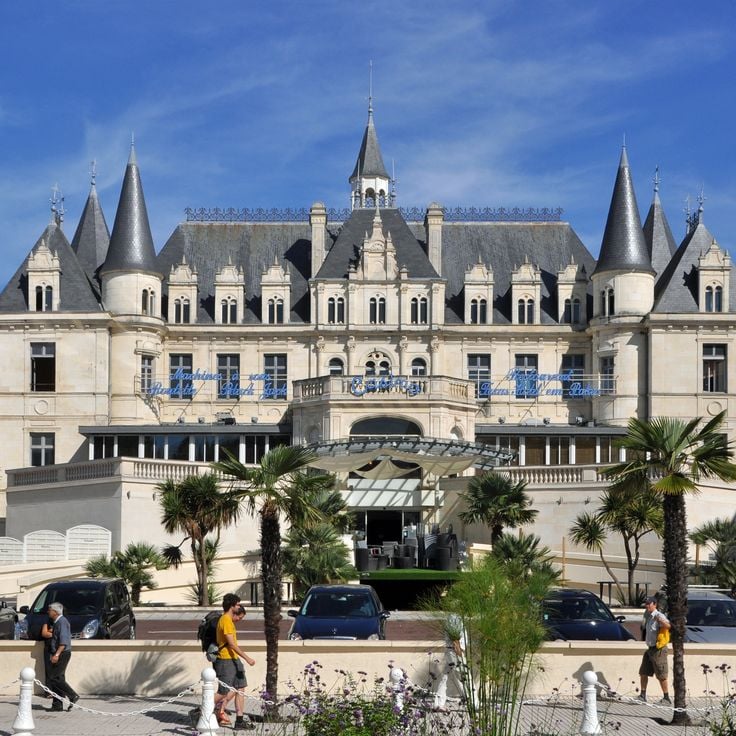
Arcachon, France
Château Deganne was built in 1853 for Adalbert Deganne and represents a significant example of Second Empire architecture. The building combines classical French elements with decorative features characteristic of the Napoleon III style. Since 1903, the château has housed the Arcachon Casino, providing visitors access to its historical salons featuring ornate ceilings, stucco work, and crystal chandeliers. The façade displays symmetrical proportions and wrought-iron balconies. Located in the center of Arcachon's Winter Town district, the château documents the development of this seaside resort during the 19th century.